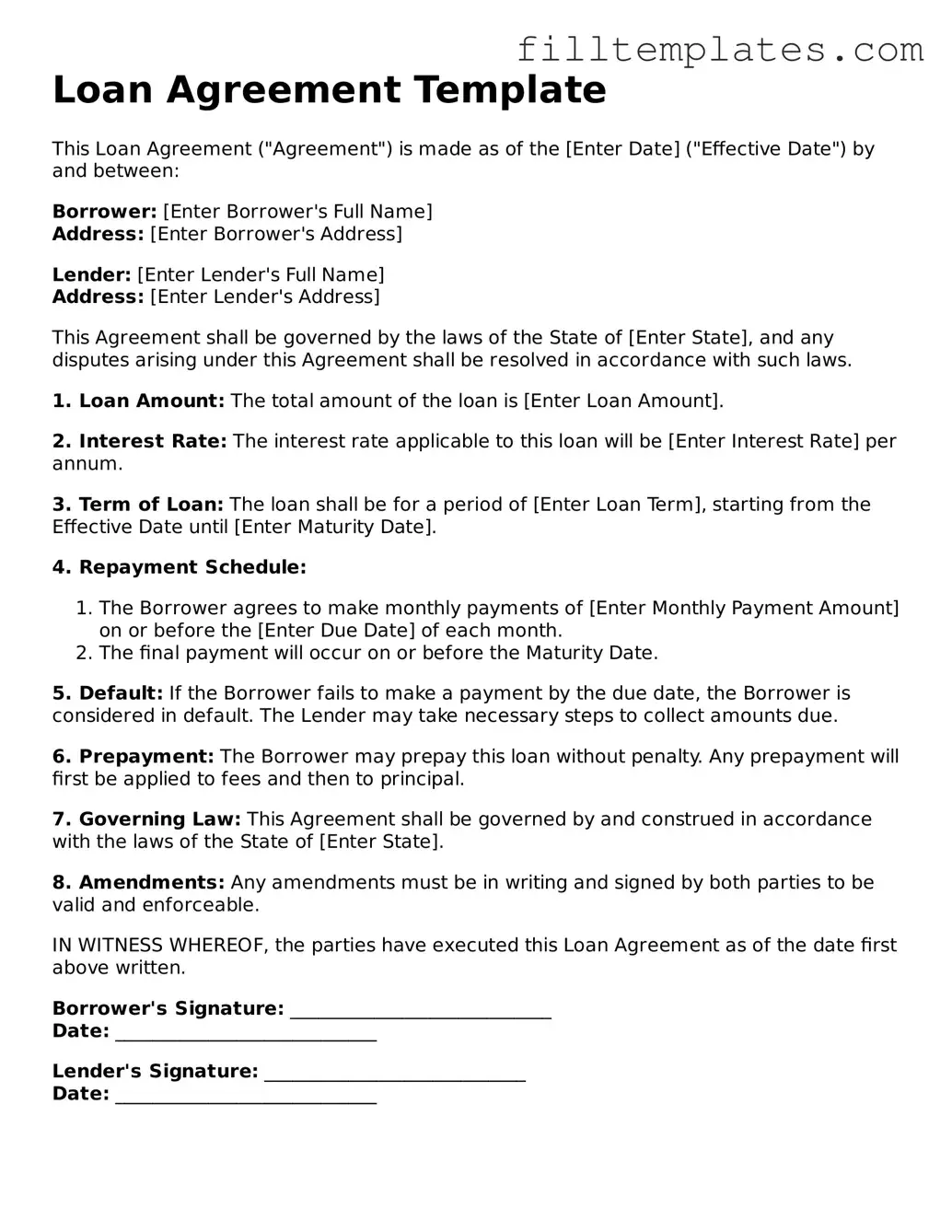Loan Agreement Template
This Loan Agreement ("Agreement") is made as of the [Enter Date] ("Effective Date") by and between:
Borrower: [Enter Borrower's Full Name]
Address: [Enter Borrower's Address]
Lender: [Enter Lender's Full Name]
Address: [Enter Lender's Address]
This Agreement shall be governed by the laws of the State of [Enter State], and any disputes arising under this Agreement shall be resolved in accordance with such laws.
1. Loan Amount: The total amount of the loan is [Enter Loan Amount].
2. Interest Rate: The interest rate applicable to this loan will be [Enter Interest Rate] per annum.
3. Term of Loan: The loan shall be for a period of [Enter Loan Term], starting from the Effective Date until [Enter Maturity Date].
4. Repayment Schedule:
- The Borrower agrees to make monthly payments of [Enter Monthly Payment Amount] on or before the [Enter Due Date] of each month.
- The final payment will occur on or before the Maturity Date.
5. Default: If the Borrower fails to make a payment by the due date, the Borrower is considered in default. The Lender may take necessary steps to collect amounts due.
6. Prepayment: The Borrower may prepay this loan without penalty. Any prepayment will first be applied to fees and then to principal.
7. Governing Law: This Agreement shall be governed by and construed in accordance with the laws of the State of [Enter State].
8. Amendments: Any amendments must be in writing and signed by both parties to be valid and enforceable.
IN WITNESS WHEREOF, the parties have executed this Loan Agreement as of the date first above written.
Borrower's Signature: ____________________________
Date: ____________________________
Lender's Signature: ____________________________
Date: ____________________________
